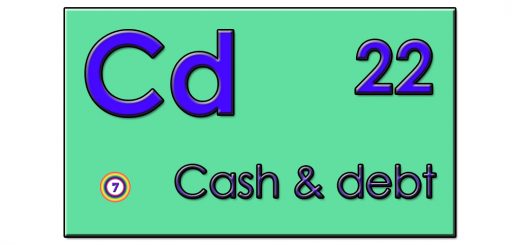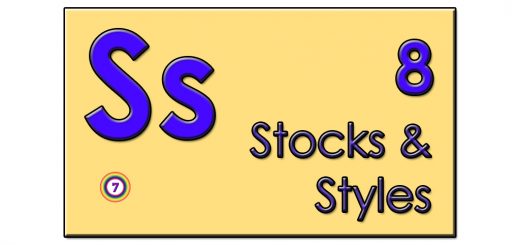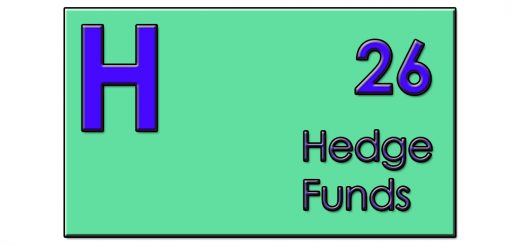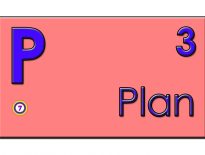ISAs – Elements 14

This post is part of the Elements series, a Periodic Table of all the Investing Elements that you need to take control of your financial life. You can find the rest of the posts here.
ISAs
What is it?
ISA stands for Individual Savings Account.
It’s a tax-sheltered wrapper for your savings that you manage yourself.
- You put in money each tax year out of your earned income – up to an annual limit of £15,240 (set to rise to £20K next year).
- There’s no tax relief on the way into an ISA, but once inside, your money grows tax-free and you don’t need to declare interest, income or capital gains on your tax return.
- You can take money out anytime, but each contribution allowance lasts for a single tax year – you can’t put back the money that you take out.
- Any money you take out of an ISA is also free of tax.
- Only you can make contributions to your ISA – your employer can’t make contributions.
There are several flavours of ISA, each of which can be contributed to each year (the contribution limit works across all the ISAs you take out in a given year):
- The Cash ISA, which is like a savings account with a bank
- The Stocks and Shares ISA, which is like a trading account with a stockbroker or fund platform
- The new Innovative Finance ISA, which is like an account with a peer-to-peer (P2P) lending platform
- The even newer Lifetime ISA (LISA) – available from April 2017 – which is actually a cross between a pension and an ISA:
- You get 25% tax relief on any money you put into a LISA, up to £4K per year
- You can’t access the money until age 60 unless you are using it as a deposit on your first home
- Only people between 18 and 40 can open a LISA, and they must stop contributing at age 50
- The LISA will replace the existing Help to Buy ISA, which has lower limits
There’s also a Junior ISA with lower contribution limits that you can set up for your children.
The rest of this article will use the Stocks and Shares ISA as the default ISA
- Cash is not a suitable asset class for long-term investment, so we will not describe Cash ISAs
- P2P lending is better accessed through specialist investment trusts, which can be held in both SIPPs and ISAs
- The LISA is a product designed to shore up the UK property market and has no advantages for anyone not planning to buy their first house.
- If / when we’re talking about a different kind of ISA we’ll make that clear.
What kind of element is it?
An ISA is a product, offered by a wide range of providers in the UK:
- banks
- building societies
- credit unions
- friendly societies
- stock brokers
- fund supermarkets and investing platforms
- peer-to-peer lending platforms
You can move an ISA from one provider to another (and from one type to another) without losing the tax shelter.
- even partial transfers are allowed
Who needs it?
Almost anyone can open an ISA.
- You need to be over 18 (16 for a Cash ISA) and resident in the UK (or working abroad for the UK government).
Many people who are saving for retirement – and everyone who wants to retire before the age at which you can access your SIPPs (currently age 55) – will need an ISA.
You should normally allocate your savings each year in the following order:
- Pay into your workplace pension in order to secure any matched contributions from your employer
- Pay into your SIPP (up to £40K per year) – the tax treatment of SIPPs is superior to that of ISAs
- Pay into your ISA
The tax treatment of SIPPs is superior to that of ISAs (see here).
But if you expect to be able to retire before age 55, you need to save some of your money into ISAs, so that you will have some income to get you from your early retirement (FIRE) age to age 55.
- You can work out whether you will be able to retire before 55 using our Four Pot Solution spreadsheet.
SIPPs are particularly attractive to higher-rate taxpayers, who get a bigger boost on the way in, and are more likely to be in a lower tax bracket in retirement.
- If you earn so much that your annual pension contribution allowance has been tapered down to £10K pa – or if you have already filled your pension – then ISAs will be of interest again.
What comes before it?
Before you can afford to save for a pension, you need to:
- build a short-term cash emergency fund (say six months of expenses)
- clear down all your debts (apart from your mortgage if you have one)
- contribute to your workplace pension in order to secure any matched contributions from your employer
You will need to have a budget in order to make sure you are cash positive each year (in order to pay down your debts, build up your emergency fund and have money left to invest).
You will also need a financial plan (how much money you will need and when, and how you will get there) and your financial statements to record your progress towards your goals.
As discussed above, you would normally be contributing to a workplace pension and / or a SIPP before you considered an ISA.
What comes after it?
The non-core investment products – VCTs and EIS / SEIS.
When you reach retirement, you can start to draw cash out of your ISAs as well as your SIPPs.
When you die, your ISAs end and the investments become part of your estate – they are not exempt from Inheritance Tax.
- You can pass the value of your ISA as a one-off allowance to your spouse (or civil partner).
What age do you need it from?
As soon as you’ve cleared your debts, set up an emergency fund, paid your workplace pension and SIPP contributions, and still have money left each year.
- Some people might never reach this stage, and most people will be forty or more before they do.
Or, as soon as you decide that you want to retire early (before age 55).
What age do you need it until?
Until your retirement age, whatever that might be.
- The standard retirement age (at which you qualify for the state pension) is now 66, and will rise from there
- SIPPs can be accessed from age 55
- Some people will want to retire even earlier than that
There’s no compulsion to take money out from 55 or even 66, and you can keep on working and leave the money invested until you need it.
How much does it cost?
ISAs as tax-shelter wrappers are usually free, but you may be charged a fee for the investments that you hold inside them.
This may be charged as a percentage of your portfolio’s value – meaning they rise as your pot grows – or they may be fixed, or they could be capped at a maximum value each year (often as low as £50 pa).
There are also charges for trading stocks (and ETFs and investment trusts) – commission charges.
What’s in it?
One of the key advantages of ISAs (along with SIPPs) – is the range of investments that you can hold:
ETFs allow you access to a wide range of other assets (commodities for example), and there are listed trusts that provide exposure to private equity and hedge funds.
What does a good one look like?
Since an ISA is just a wrapper for underlying investments, the main criteria for evaluating them are:
- costs
- range of available investments
- interface and support
A good ISA is cheap, easy to use and offers a wide range of investments.
What does a bad one look like?
As usual, a bad one is the opposite of a good one – expensive, hard to use and with a poor range of investments.
Any recommended brands?
The last time we looked at this, iWeb (part of Lloyds bank) and YouInvest (A J Bell) came out on top.
Fidelity is also very cheap if you can deal with a (slightly) restricted range of ETFs and investment trusts.
What are the main risks?
ISAs aren’t risky in themselves. Your assets should be ring-fenced if your ISA provider fails, though only the first £50K of cash is guaranteed.
ISAs merely provide you with a way to access underlying investments, which can be as risky as you choose.
How do you deal with these risks?
You might want to have more than one ISA.
- I have three, though this is mostly for historical reasons.
- It can be convenient to trade in one ISA if the interface to another is down for some reason, but this happens very rarely.
You might also want to keep the cash level in each ISA below £50K.
















